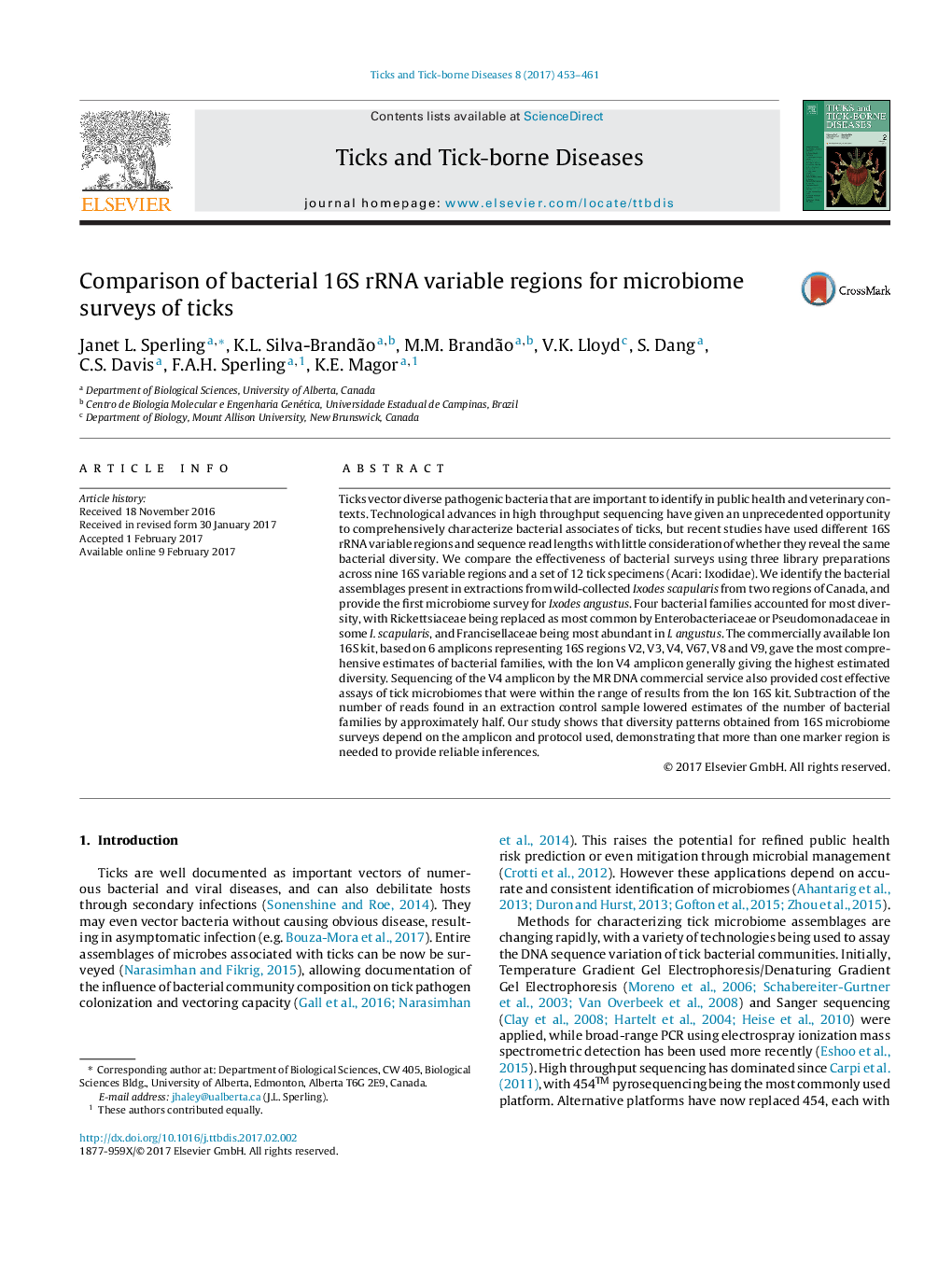| Article ID | Journal | Published Year | Pages | File Type |
|---|---|---|---|---|
| 5546286 | Ticks and Tick-borne Diseases | 2017 | 9 Pages |
Ticks vector diverse pathogenic bacteria that are important to identify in public health and veterinary contexts. Technological advances in high throughput sequencing have given an unprecedented opportunity to comprehensively characterize bacterial associates of ticks, but recent studies have used different 16S rRNA variable regions and sequence read lengths with little consideration of whether they reveal the same bacterial diversity. We compare the effectiveness of bacterial surveys using three library preparations across nine 16S variable regions and a set of 12 tick specimens (Acari: Ixodidae). We identify the bacterial assemblages present in extractions from wild-collected Ixodes scapularis from two regions of Canada, and provide the first microbiome survey for Ixodes angustus. Four bacterial families accounted for most diversity, with Rickettsiaceae being replaced as most common by Enterobacteriaceae or Pseudomonadaceae in some I. scapularis, and Francisellaceae being most abundant in I. angustus. The commercially available Ion 16S kit, based on 6 amplicons representing 16S regions V2, V3, V4, V67, V8 and V9, gave the most comprehensive estimates of bacterial families, with the Ion V4 amplicon generally giving the highest estimated diversity. Sequencing of the V4 amplicon by the MR DNA commercial service also provided cost effective assays of tick microbiomes that were within the range of results from the Ion 16S kit. Subtraction of the number of reads found in an extraction control sample lowered estimates of the number of bacterial families by approximately half. Our study shows that diversity patterns obtained from 16S microbiome surveys depend on the amplicon and protocol used, demonstrating that more than one marker region is needed to provide reliable inferences.
